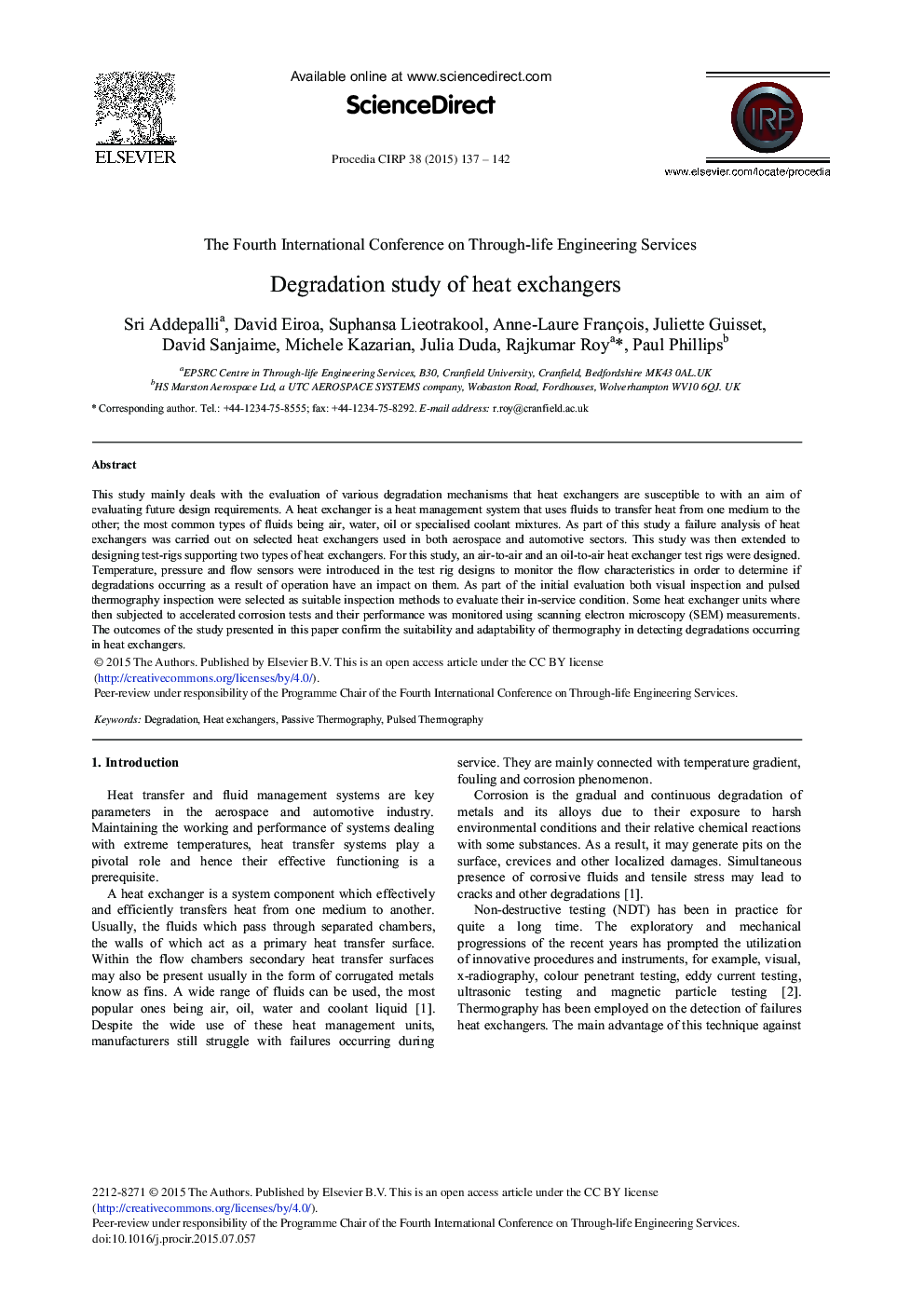| Article ID | Journal | Published Year | Pages | File Type |
|---|---|---|---|---|
| 1699179 | Procedia CIRP | 2015 | 6 Pages |
This study mainly deals with the evaluation of various degradation mechanisms that heat exchangers are susceptible to with an aim of evaluating future design requirements. A heat exchanger is a heat management system that uses fluids to transfer heat from one medium to the other; the most common types of fluids being air, water, oil or specialised coolant mixtures. As part of this study a failure analysis of heat exchangers was carried out on selected heat exchangers used in both aerospace and automotive sectors. This study was then extended to designing test-rigs supporting two types of heat exchangers. For this study, an air-to-air and an oil-to-air heat exchanger test rigs were designed. Temperature, pressure and flow sensors were introduced in the test rig designs to monitor the flow characteristics in order to determine if degradations occurring as a result of operation have an impact on them. As part of the initial evaluation both visual inspection and pulsed thermography inspection were selected as suitable inspection methods to evaluate their in-service condition. Some heat exchanger units where then subjected to accelerated corrosion tests and their performance was monitored using scanning electron microscopy (SEM) measurements. The outcomes of the study presented in this paper confirm the suitability and adaptability of thermography in detecting degradations occurring in heat exchangers.
